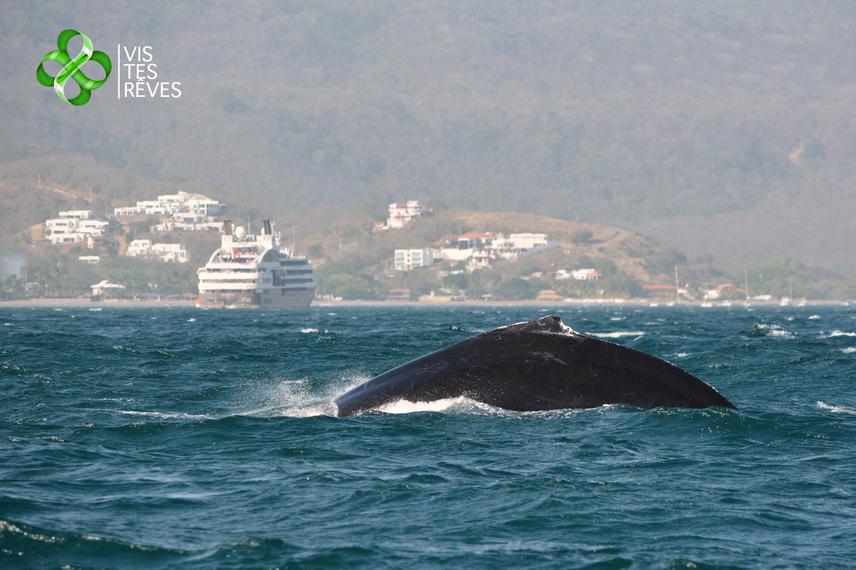Joëlle De Weerdt
The Cetacean conservation project of Nicaragua aims at combining fundamental values on science, education and conservation in order to safeguard the endangered cetacean species in the country.

Humpback whale in front of San Juan del Sur
Nicaragua is one of the poorest countries in Latin America. The cetacean conservation of Nicaragua project is a pioneer project in the country. No scientific data is available on cetaceans and due to the development of eco-touristic activities on whale watching and the future construction of the Nicaragua canal there is some concern on cetacean conservation. Whale watching activities are developing without any control: hotels, hostels and fisherman offer whale watching trips without any regulations. Knowing the cetacean biodiversity of Nicaragua will help conserve and manage the cetacean populations occurring in the country.
The research project runs over four years (2016-2020) in the two extreme sides of the country along the Pacific coast: Padre Ramos (North) and San Juan del Sur (South). The project englobes four different aspects: science, education, conservation and management. In order to achieve these objectives collaboration will be put in place with the university, the national government bodies and local NGO’s. Generating scientific data on cetaceans will help to:
i) gather baseline information on species presence, distribution, movement patterns, behaviour and updated conservation statuses;
ii) develop capacity building for sustainable eco touristic activities;
iii) produce the first documentation on marine mammals as field guide and book chapter of Nicaragua;
iv) create awareness amongst local communities, boat operators, fisherman and all other actors related to eco-tourism;
v) make an environmental impact assessment of the construction of the Nicaraguan canal;
vi) train national and international students on cetacean research. Methods includes land and boat based surveys using photo-identification as a standard method.